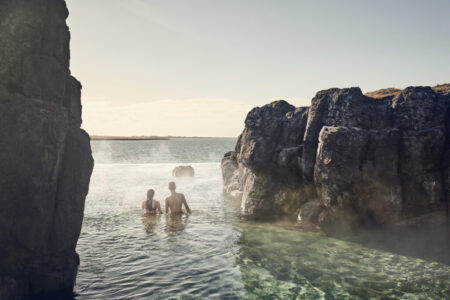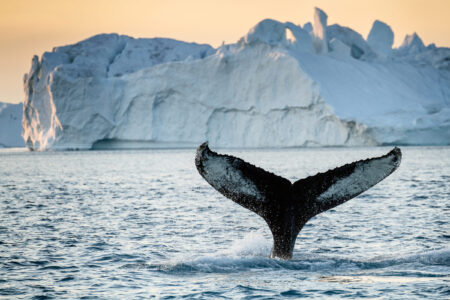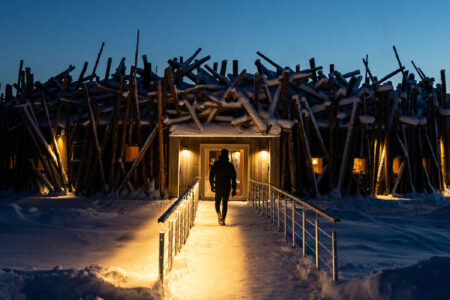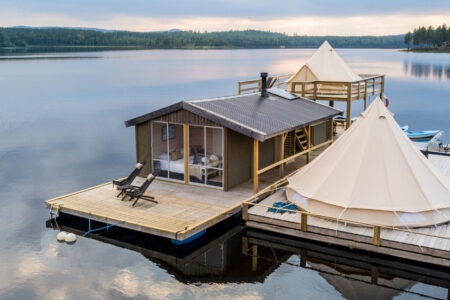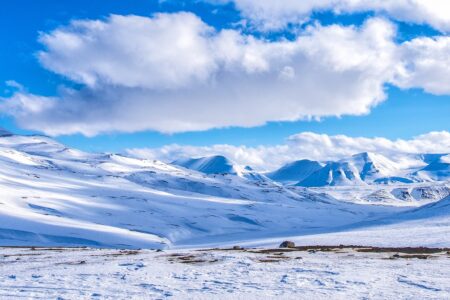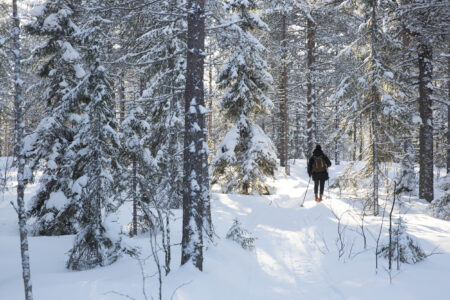Bernadette Olderdissen writes us a guest post telling us all about her experience of discovering Swedish Lapland and finding her place in the world at beautiful Filipsborg.
You know those magical destinations that rank high on your bucket list and that all your friends who have already been raving about? Well, Swedish Lapland was never anywhere near my bucket list – and everybody I knew was either on about sitting on Santa’s lap and riding a reindeer sledge in Finnish Lapland or driving through Northern Norway’s majestic mountains up to the North Cape.
But I was as lucky as you can be, because one beautiful autumn afternoon fate played a bunch of its usual tricks and I – free travel journalist and book writer of many years – found myself at the airport of Luleå, capital of Sweden’s Northernmost province Norrbotten.
While driving East towards the town of Kalix I saw the sunset in the rear mirror in bright red, whereas the sky in front of me prepared for an early night in baby blue and pink. I was struck by the intensity and harmony of the Northern colours, and yet they weren’t the highlight of my four days’ work trip up North: I met people who gave me a peek into a life determined by nature’s rhythm instead of a city’s drums. And learnt about the eight seasons of Lapland as defined by the Sami people, the natives of Lapland. The meaning of those seasons and what I, a German city girl, could learn from them and from the Arctic nature, fascinated me. It was soon clear: I wanted to know more. Experience more!
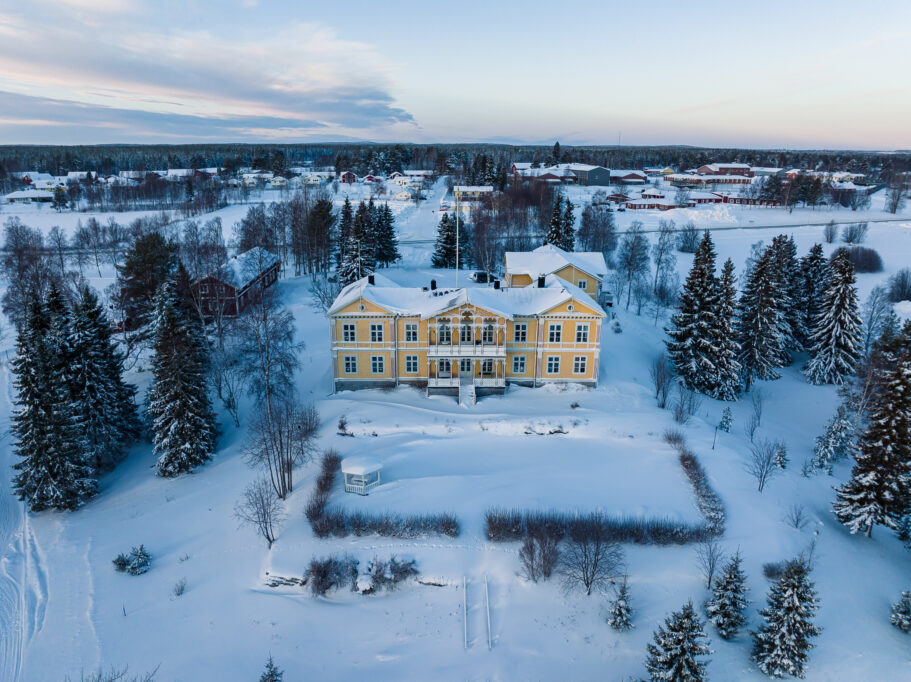
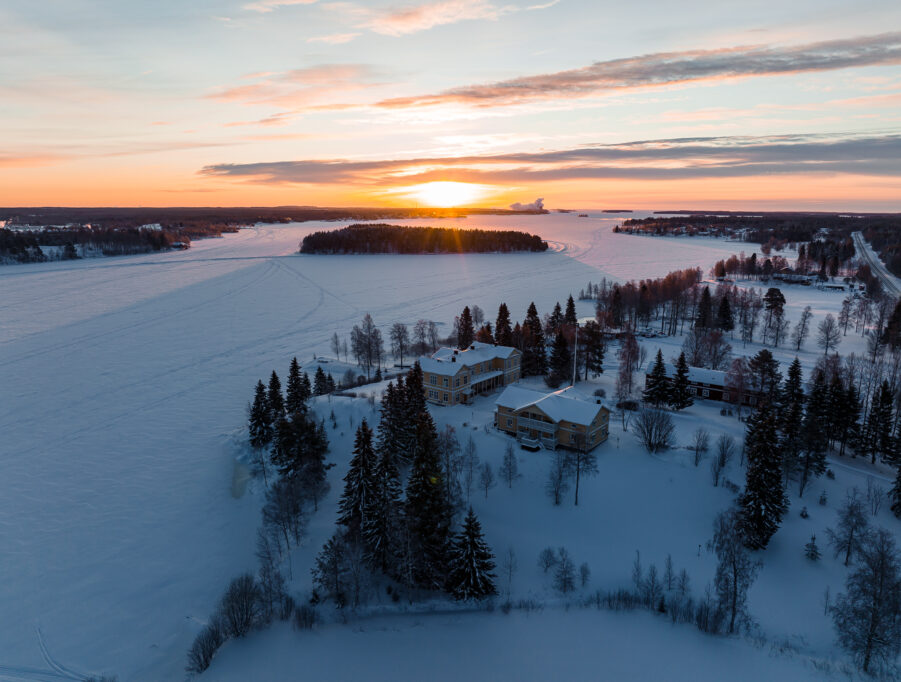

About a year later, in early January 2022, I moved to the Kalix region for one whole year with two book projects to work on – a travel guide of Norrbotten and a much more important book, about the eight seasons and learning from the Nordic nature and people. I happened to find a rental house in a village with 200 people, 300 meters away from the Bothnian sea, which was completely frozen over. Every morning I wandered into the rising sun on the sea’s frozen surface, sometimes towards tiny islands spread over the archipelago, mostly towards the bare horizon. Listening. Because no matter how much of an effort my ears made, they could not perceive a thing. No humming of motors in the distance, no sirens, not even the singing of birds. “The sound of silence”. Years ago, in the deserts of the world, I believed to have found my personal definition of the famous song title. But no, far out there on the sea covered by thick ice, the silence was even more tangible and should beckon me day by day for four whole months.
Yet while I felt like I could fill a whole book about the silence’s spell and its utterly calming, almost healing effect on me, I knew my writing job required more than that. I had to get out of my silent bubble, at least from time to time, to meet locals and to learn from them. After all, I wanted to look behind the scenes of how the local people and animals navigate through this often rough Nordic nature like a city person through morning traffic. Since the Sami people’s eight seasons are often called “the seasons of the reindeer” – as life used to pivot around the reindeer and their needs in the traditional reindeer herders’ lives – I wanted to start off by learning what is so special about the cute little Rudolphs.
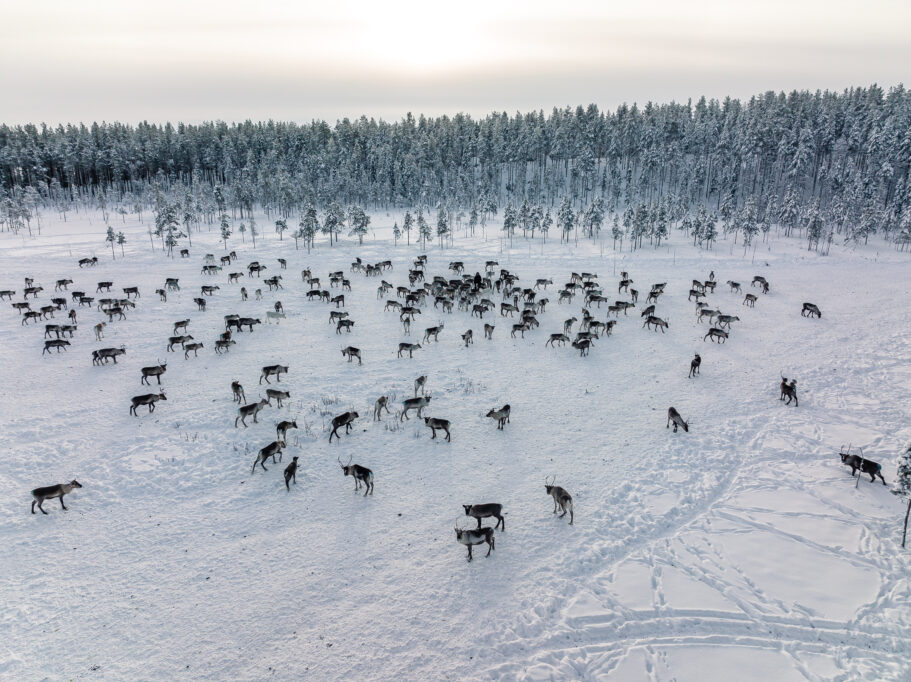
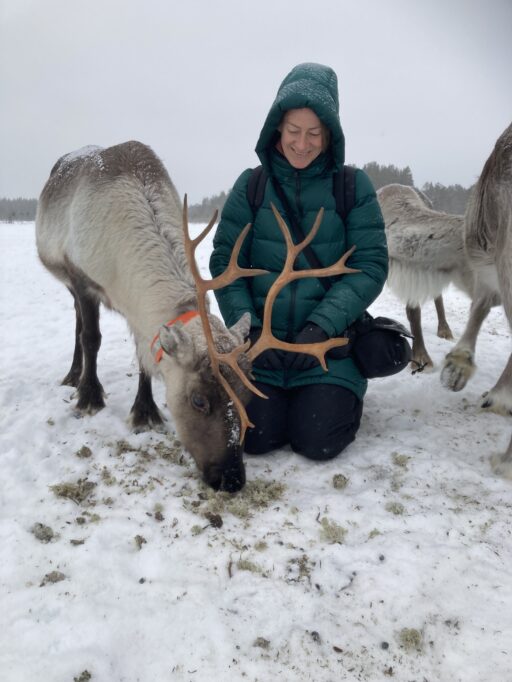
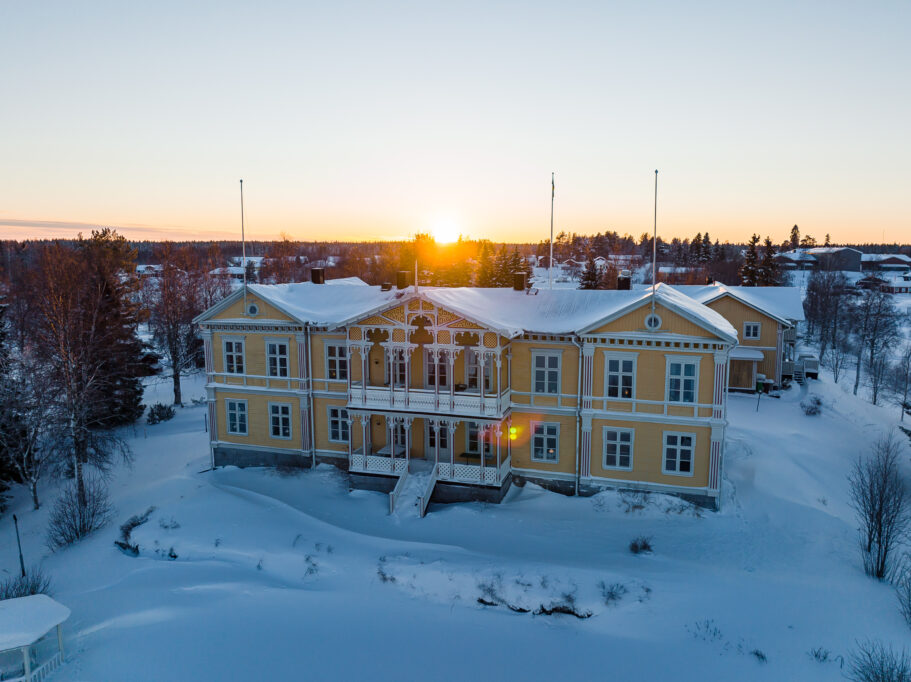
After some online research about who in the Kalix area could possibly know something about reindeer and maybe even help me meet some, I stumbled over the Filipsborg website. The picture of a stunning mansion in the colour of the afternoon summer sun was an eye-catcher alright, but it was the hotel’s offer of a “reindeer safari” that really attracted my attention. However, I needed to make sure the activity wasn’t just a zoo-like visit to take as many instagrammable pictures and selfies with reindeer backdrop as possible, while remaining as ignorant as ever about the animals and their cultural role. The website text, which already described a few of the reindeer’s features and peculiarities, sounded promising, and a message by hotel owner Örjan Pekka even more: He invited me to join a reindeer safari and get to know the animals myself.
One late January morning I felt excited like a child on Christmas Day as we rode deep into the woods outside Kalix, holding on to a feeding trough on skids, pulled by a local reindeer owner on a snowmobile. Soon we spotted some curious furry faces peering from behind the trees, while the most hungry reindeer ventured towards us. As we stopped on a great glade and started spreading the food, Örjan instructed the other visitors and me to never look a reindeer straight in the eye in order not to scare them.
He made us realise, above all, that it was the animals who decided whether or not they wanted to come close to us, and that if so, it would be on their own terms and take time for them to accept and trust us. I sat down on the snowy floor, turning into the invisible observer, and after a few minutes my patience and quietness paid off: More and more reindeer gathered around me, eating off the ground right next to my body, while I observed their anatomy, perfectly adapted to the Arctic climate from snowshoe-like feet to noses with cold air filter functions. I felt the animals’ hot breath on my face and couldn’t stop grinning, because within just a few minutes, on my first close encounter with these semi-wild animals, I had become a part of the herd. Still, many months later, I feel like those moments in the midst of reindeer were among the happiest of my life.

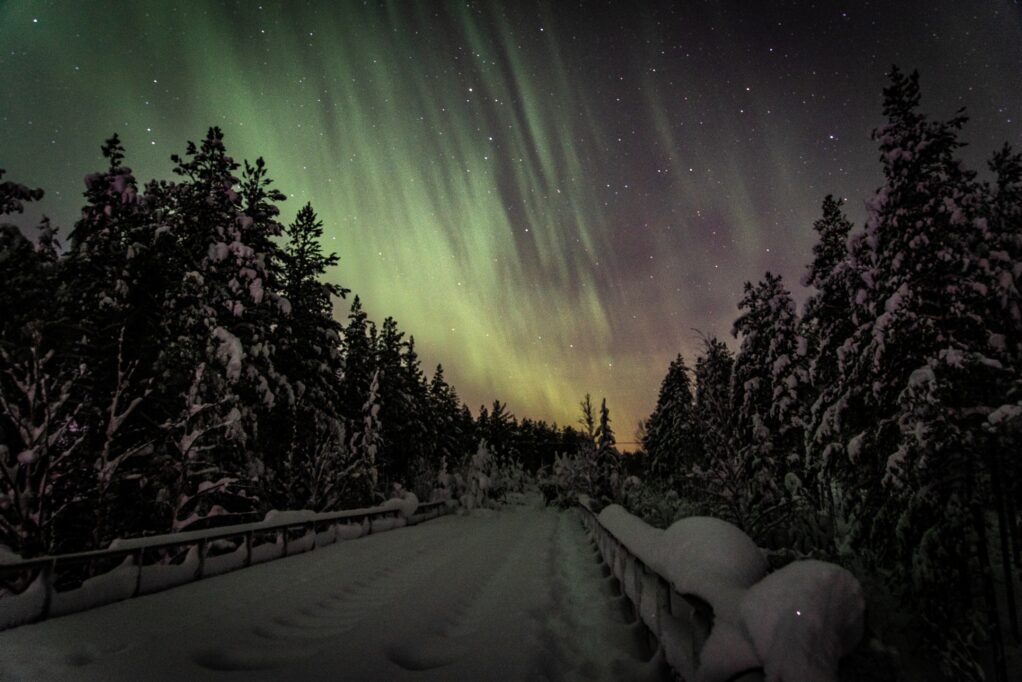
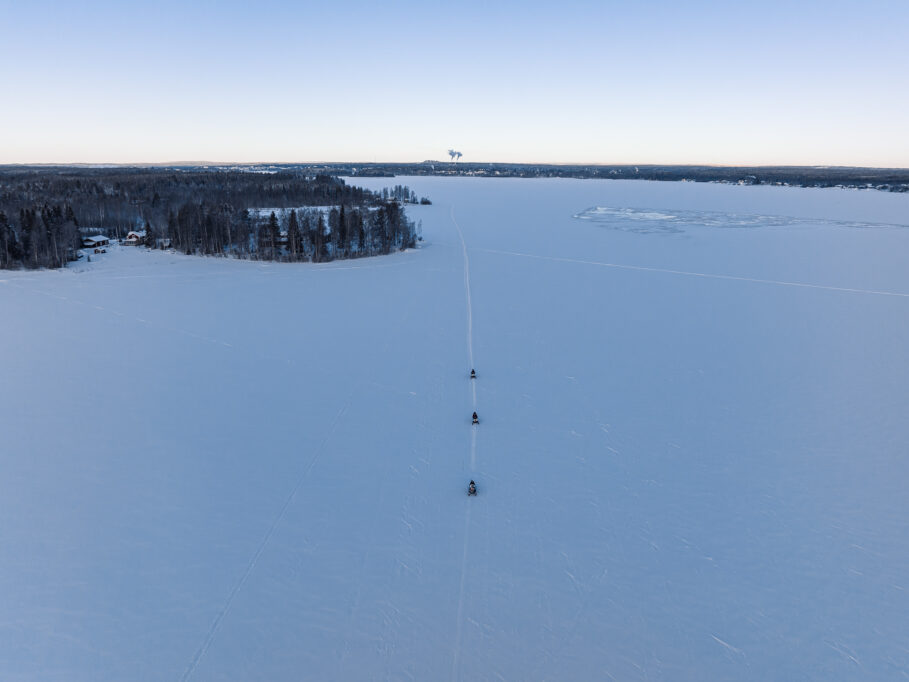
During the car transfer from and back to Kalix, Örjan, a reindeer owner himself, gave us an introduction to the reindeer, the tradition of reindeer ownership in the Kalix area and in all of Swedish Lapland. We got a great overview over the significance of the reindeer in local culture, both for people of Sami and other origin. This introduction exceeded all my expectations as a usually critical and sometimes way too curious journalist.
Which is why I decided to join more of the Filipsborg activities, like snow mobile safaris into the woods and out onto the ice of the Kalix river and into the archipelago. I realised that these trips perfectly responded to my need of looking beyond the sheer beauty of my new Arctic home, allowing me to grasp many a how, why, when or what. The goal was not to speed through the winter wonderland, but to stop, stand still, listen and ask questions. On many tours I met like-minded visitors from around the world who greatly appreciated what Örjan calls “storytelling”, thanks to which we would learn, among other things, about the local animals and their habits, about the different trees and how to estimate their age, about how to check the ice’s thickness on the river or sea and identify when it is safe enough to walk or even drive on.
As I enjoyed the privilege of staying in Swedish Lapland for a whole year, I could not only benefit from Örjan’s storytelling about winter, but about the remaining seven seasons as well. Filipsborg is slowly developing its offer of nature activities throughout the year to show us visitors from abroad the possibilities and particularities of each season – because as I soon grasped, Swedish Lapland is a lot more than just winter magic with thick snow and aurora dancing across the sky.
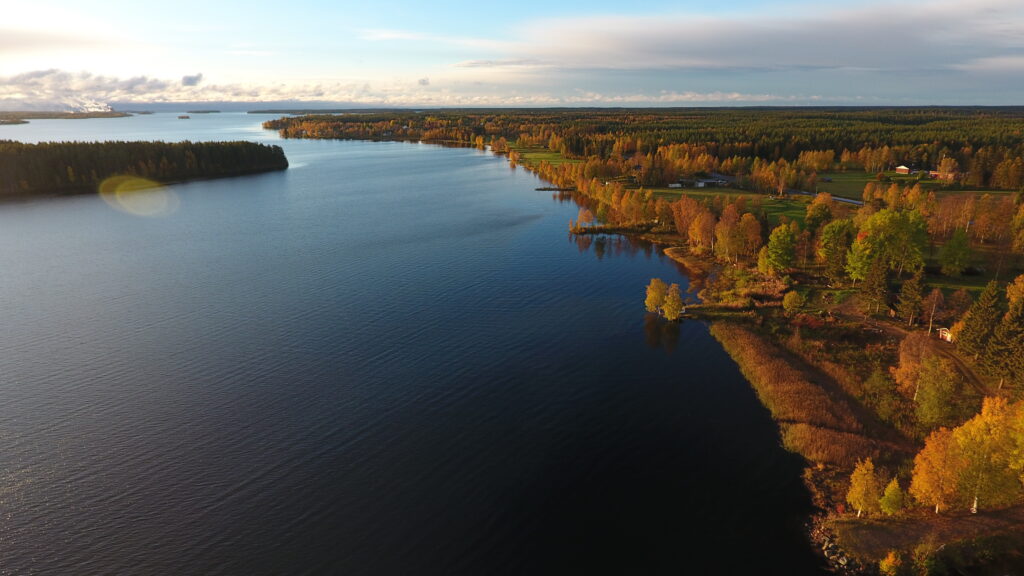
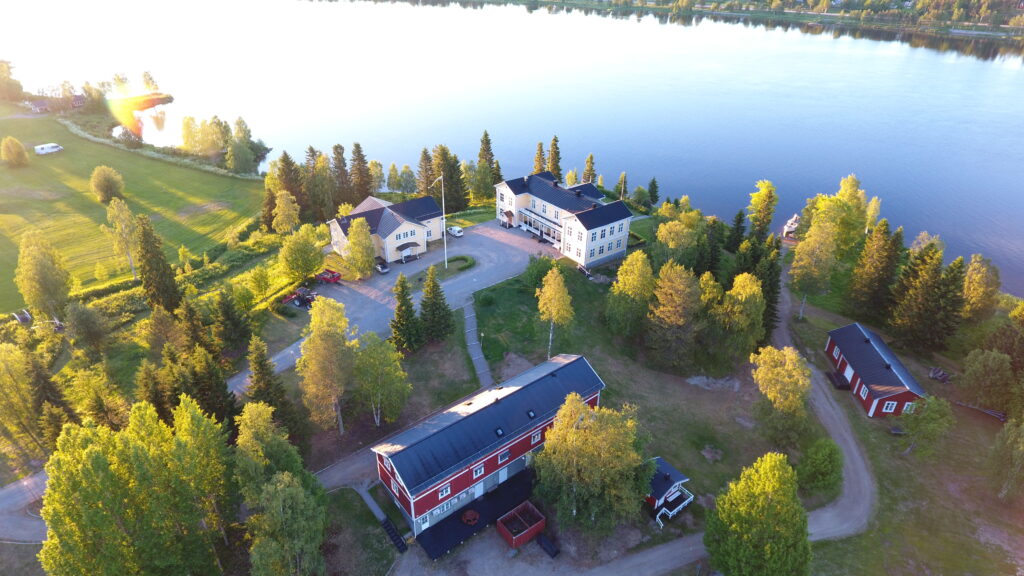
Little had I known before about the wonderful variety of berries, such as Arctic cloudberries, also called “the forest’s gold” because of their golden colour. About the peaceful act of the “berry-picking-flow” while searching the ground for whatever nature has to offer at the time being, from cloudberries to raspberries to blueberries to lingonberries and more. About the great importance of fishing in Swedish Lapland as I joined Örjan, also a fisherman, and his buddies in autumn to fish “löja”, a tiny fish I had never heard of before, known as “vendace” or “European cisco” in English. Both local and professional fisherman catch this fish from late September till the middle of October for its roe, used to make the famous caviar “Kalix löjrom”. In the factory in Kalix it may be possible to watch as the roe is created professionally, but again it was thanks to Filipsborg that I could experience an ordinary fishing day with locals, including a “fika” (Swedish for snack and coffee) and more stories by a fire, which
tends to be a part of so many trips into nature in the Swedish Lapland way of life.
Even a whole book was not enough to share all of what Swedish Lapland’s nature and local people like Örjan have taught me throughout one amazing year in the rhythm of nature. But if you have the chance to experience at least a fraction of what I did during whichever season – because seriously, each one up North is special in its own way – I very much encourage you to go for it.
